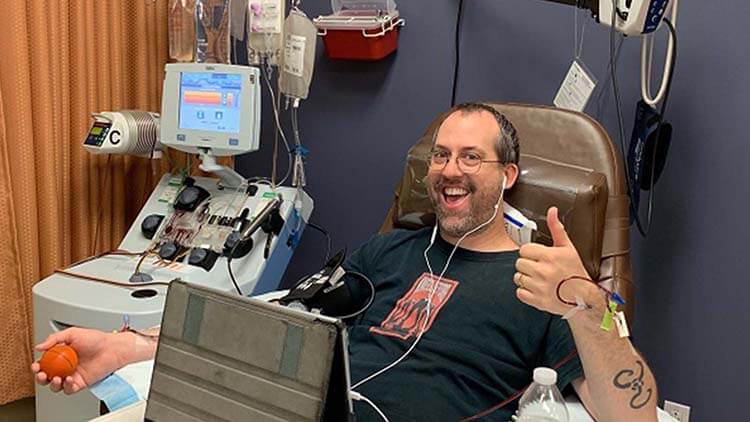January 15, 2019
James first learned about donating bone marrow while he was helping his parents run a festival for their church.

“There were a bunch of booths at the festival and one of them was for Be the Match, a bone marrow donor program,” says James, Software Developer at Energy Toolbase in Houston. “I talked to them for some time, and I learned how unlikely it is to find a compatible marrow donor. They took a cheek swab to collect my DNA and I forgot about it for the next 11 years.”
dBone marrow donations can save the lives of individuals with blood cancers like leukemia, lymphoma, sickle cell anemia, and other life-threatening diseases. Be the Match states that only about eight percent of members who complete additional testing will go on to donate.
However, in August 2018, James got a call.
“They said I might be a match for a one-year-old boy with Chronic Granulomatous Disease," says James. "It's a pretty nasty auto-immune disorder. My own son had just turned one, so this really struck a chord with me.”
Chronic Granulomatous Disease (GCD) is a genetic immune system disorder that occurs when a type of white blood cell that usually helps your body fight infections doesn't work properly. As a result, people with the disorder may develop a long list of bacterial or fungal infections.
Before James could donate his marrow, he had to go through some additional procedures to ensure donation was safe for both him and the young boy. But not long after, he received the call letting him know he could proceed with the bone marrow donation.
“The bone marrow procedure involved injecting myself with a drug in the stomach every morning for five days,” says James. “The drug caused my body to generate a ton of marrow stem cells and eject them into my blood stream. It didn’t hurt, but it was really uncomfortable. I was very achy, and occasionally I could feel my bones throbbing. It was weird.”
At the same time James' body was building extra marrow stem cells, the doctors were in the process of erasing the young boy’s immune system.
“A marrow stem cell transplant fully replaces the recipient's original immune system with the donor's,” says James. “The young boy's blood type will change to mine. My allergies will be his allergies. All the immunities I've built up over 40 years will pass to him.”
After five days of injections, James went into the blood donation centre. He was hooked up to a machine that pumped the blood out of one arm, extracted the stem cells he over-produced, and pumped the blood back into his other arm. After four hours, the donation was complete.
As for the young boy who received James' marrow stem cells, James has not heard how he's doing.
“They aren't allowed to tell me anything for over a year, so now I just wait. Hopefully the transplant went well,” says James.
Learn more about marrow donation at BeTheMatch (US-only).
Use the links below to share this article on LinkedIn, Twitter, Facebook, or via email.